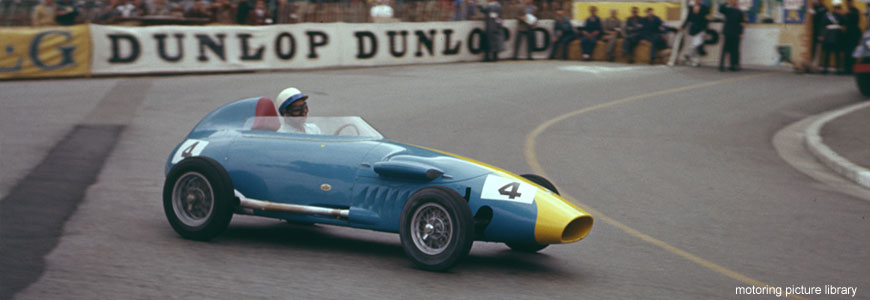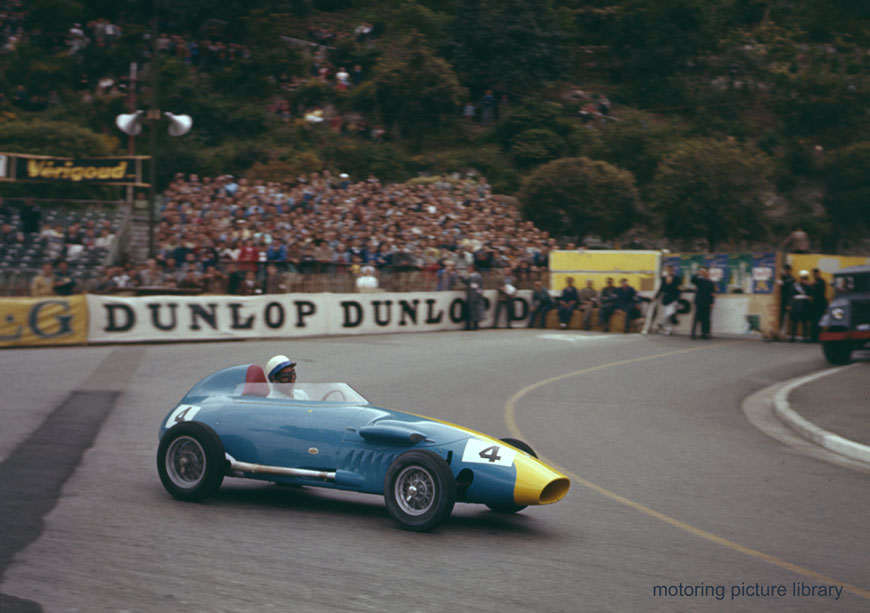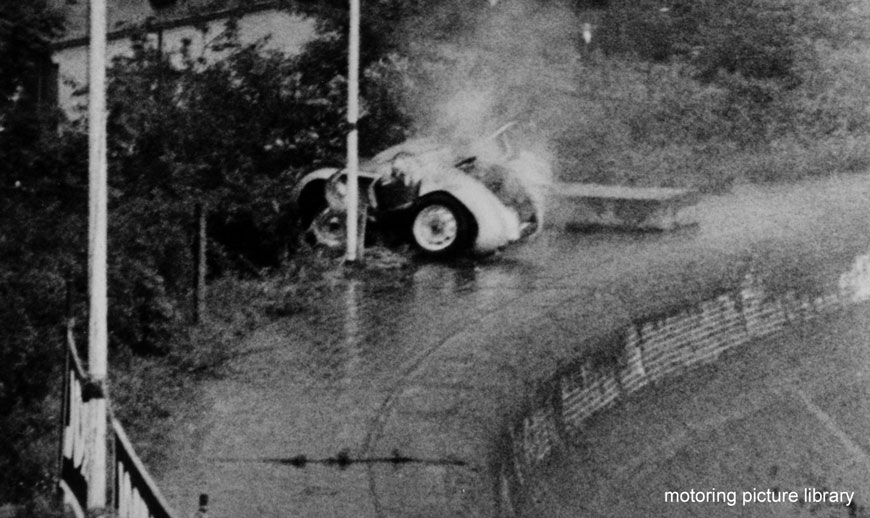
The first woman to compete in Formula One, Italian aristocrat Maria Teresa de Filippis was determined to ‘take on the men’ and prove herself behind the wheel.
Highly-respected as a racing driver, Maria was loved and admired by many – none more so than five-times World Champion Juan Manuel Fangio who was her race father at Maserati and who openly feared for her safety, remarking, ‘You go too fast, you take too many risks.’ Other admirers included Tony Brooks, Alberto Ascari and Sir Stirling Moss, who would often blow her a kiss while he lapped her, remarking that she had impeccable manners and would always pull over!
Childhood & Scornful Brothers
Born 11th November 1926 in Naples into an aristocratic family who owned the city’s 16th century Palazzo Marigliano and Palazzo Bianco near Caserta, Maria, the youngest of five children was an accomplished horse rider, skier and tennis player during her teenage years and took up racing cars aged 21, gaining experience on the winding and twisting roads of the Amalfi Coast to prove her prowess to her two older brothers, Antonio and Giuseppe who were scornful of her driving technique; remarking that she should stick to riding horses and that she would never win a race.
Competitive Debut
Maria made her competitive debut in 1948 aged 22, driving a Fiat 500 in a local hillclimb and finishing with the second fastest time in her class over a 10km course between Salerno and Cava dei Tirreni. There was no holding back then and her father, Count Franz who was an engineer and businessman who had made a fortune through the electrification of irrigation in rural Campania, gave her financial backing. Her mother simply gave wise words, ‘Go slow and win.’
Love Strikes
Maria contined to gain experience, moving through the ranks and driving different models of sports cars that had been built by small specialist constructors that were beginning to make their mark in Italy. Whilst competing in an 1100cc OSCA she met and fell in love with Luigi Musso who helped her with her driving techniques. For a time this glamorous pair travelled together, often competing against each other and placing bets. They became engaged but never married.
Turning Down Enzo Ferrari
In 1954 Maria drove her own Urania BMW in the Italian Sports Car Championship, finishing 2nd for that season. Seeing her obvious talent and potential, Maserati bought her in as a works driver. She accepted, having first turned down Enzo Ferrari, declaring that she did not relish the idea of being commanded by Mr Ferrari and that she did not want to drive for his team. Moving to the Maserati Grand Prix Team in 1956 was by far her biggest challenge. Maria was a beautiful young woman, loved and highly respected and regarded as having exceptional courage and the men nicknamed her ‘Pilotino’ – little driver, due to her being only 5ft 2 inches tall.

Engine Oil: ‘It’s my facepack!’
In 1956 Maria entered a sports car race supporting the Naples Grand Prix where she drove a Maserati 200S around the tree-lined streets of Posipollo. Despite missing practice and therefore starting at the back of the grid, Maria worked her way up to finish 2nd to enthusiastic waving and cheering from the crowds.
In 1957 Maria came 5th in the Syracuse Grand Prix, an unoffical race in the calendar and emerged with her face covered with engine oil! ‘It’s my facepack’ she laughed!
Overcoming Physical Barriers
On 18th May 1958 alongside Jack Brabham, Mike Hawthorn and Graham Hill, Maria entered qualifying for the Monaco Grand Prix in a Maserati 250F, the same car in which Fangio had won his 5th and final championship the previous year. Due to her size the 250F had to be adapted with special padding to enable her to reach the pedals. Despite failing to qualify, this was a huge achievement, not only for Maria but also for motorsport – women in the 1950s were popular in the pits, not the cockpit! Maria later remarked that she had been at the limit of her physical stamina; particularly as the steering on the 250F was so heavy. Interestingly, another non-qualifier was Bernie Ecclestone driving a Connaught.
First Woman to Start a Grand Prix
Later that same year Maria entered the Belgian Grand Prix at the challenging Spa-Francorchamps circuit where there were no restrictions on qualifying, hence becoming the first woman to start a Grand Prix. Although she was only placed 10th King Baudouin asked to meet the Neapolitan Pilotino, declaring, ‘Your arms are like steel’ as he shook her hand!

Retirement From Racing
In 1959, following the death of her close friend, Jean Behra at the Avus speedway in Berlin Maria decided enough was enough, remarking that the longer she stayed in motor racing, the more friends, colleagues and even former lovers, lost their lives to the sport they all loved.
Whilst on a skiing holiday in St Anton, Maria met Theo Huschek an Austrian Chemist, they married in 1961 initially living in Austria, then Switzerland before finally moving to Italy. They had a daughter Carola who owns a bar near Bergamo, where her parents lived.
Re-emergence
It was not until 1978 that Maria re-emerged back onto the motor racing scene, joining the exclusive Club Internationale des Anciens Pilotes de Grand Prix F1 as their secretary. She was made the Club’s Honorary President on the occasion of her 85th birthday.
When asked her opinion of Formula One, Maria admitted to not being a great fan of modern F1 and that very little of the sport remains as it was in her day.
Legacy
Maria Teresa de Filippis died on the 9th January 2016 – she will be remembered as having exceptional courage, with her fellow competitors often remarking that she was very competent and played the game and was loved, respected and admired, especially when you consider the challenges she faced, often exceeding 170mph in the car most closely associated with her and her idol, the mighty Fangio – the 250F, indisputably the most beautiful and fastest F1 car of its era.
Next time: Pat Moss – renowned British rally driver of the 1950s and 60s and five times European Ladies Rally Championship Winner.
Sarah Crofts has been sharing her passion for motorsport with Beaulieu’s visitors since she first joined as a volunteer in 2007. Now a Museum Attendant, she has grown to love her role more and more and can’t imagine doing anything else! Sarah’s popular Women in Motorsport tour is one of several daily tours on offer in the National Motor Museum.
